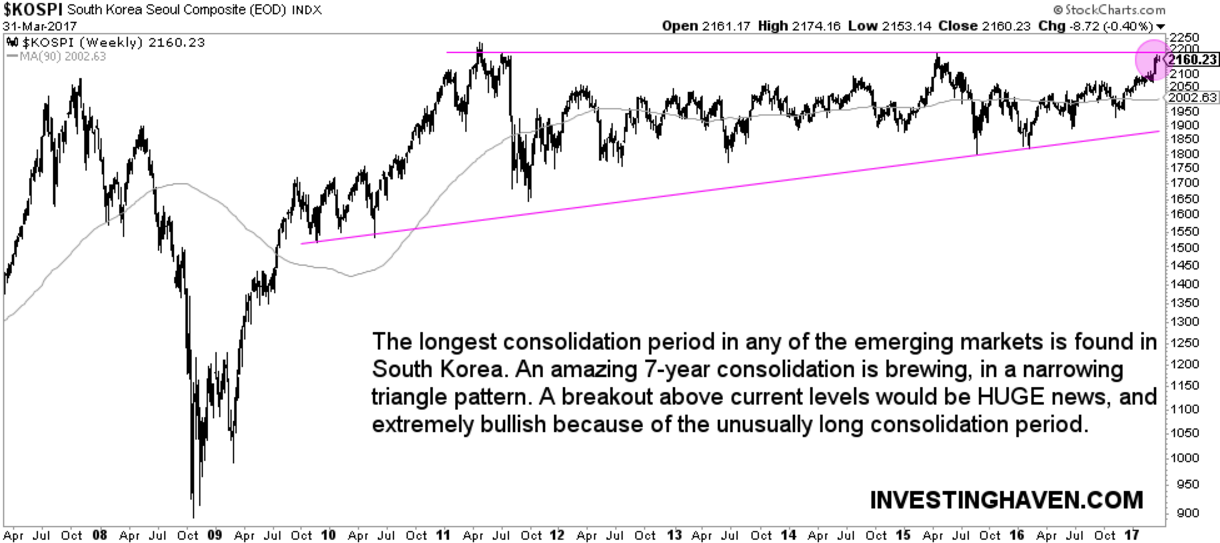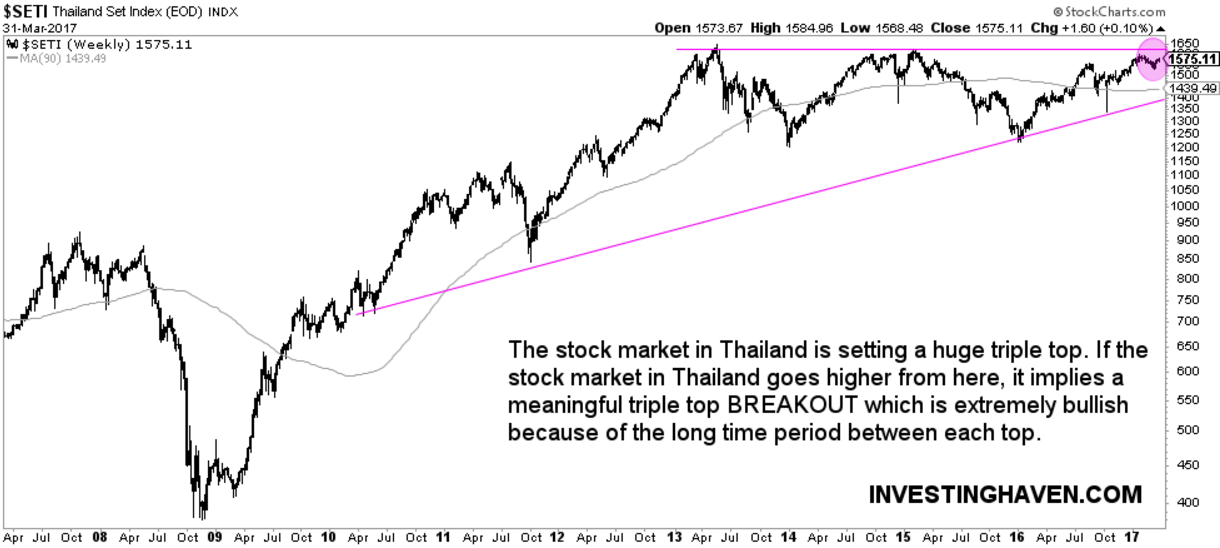Are emerging markets a buy in 2017 and 2018? If so, which emerging markets specifically should you consider?
From a contrarian perspective, emerging markets are hugely bullish. For instance,right after Trump’s victory, Bloomberg published some scary charts which show a stampede out of emerging markets. No surprise, as Bloomberg was also already very bearish emerging markets more than a year ago; that visibly has not changed.
InvestingHaven’s research team has shown the oppositie: the final trigger for emerging markets to breakout was the U.S. Fed rate hike. We have said before that they were the clear winners since then.
The Financial Post is much more bullish, certainly compared to Bloomberg. This analyst suggests to buy emerging markets in 2017 and 2018. Not only are valuations cheap, according to the analyst, but also the strong dollar environment supports a bullish outlook. Moreover, emerging markets were very much correlated to commodities in the past, but right now “that has very much changed as consumer sectors now represent a larger part of the index.”
This analyst on Forbes confirms InvestingHaven’s point of view that emerging markets are a buy from a contrarian point of view.
Lately, emerging stock markets traded at 18 months high, and InvestingHaven described that scenario in its emerging markets forecast for 2017 and the call last year that emerging markets could be the investment of 2017.
5 emerging markets to consider or even buy in 2017 and 2018
So that's the case for what was written in the past. The key question is: which market(s) to buy in 2017 and 2018?
First, by far our favorite market is India, for reasons mentioned here and here.
As an add-on to India, we also reference a tip for timing an entry point, based on this study:
“We consider the S&P CNX Nifty as the representative of stock market in India and tested whether seasonality are present in Nifty and Nifty Junior returns using daily and monthly data sets. The study found that daily and monthly seasonality are present in Nifty and Nifty Junior returns. We found Friday Effect in Nifty returns while Nifty Junior returns were statistically significant on Friday, Monday and Wednesday. In case of monthly analysis of returns, the study found that Nifty returns were statistically significant in July, September, December and January. In case of Nifty Junior, June and December months were statistically significant. The results established that the Indian stock market is not efficient and investors can improve their returns by timing their investment.”
Second, an amazingly interesting market is South Korea, specifically for its very long term consolidation period. It is highly unusual to see a 7-year consolidation. Needless to say, a breakout after such long time period is huge, and will have strong bullish implications.

Third, somehow similar to the previous chart, Thailand is testing a long term consolidation. It has formed a triple top, at least at this point. Given the consistent pattern of higher lows, a breakout is now very likely.

Fourth, we still consider China to be a candidate to be highly bullish, based on these 7 insights from China’s chart.
Last but not least, Chile (NYSE:ECH) is truly different from all other markets. Economic growth has stabilized around zero percent in recent years. As emerging markets are undervalued, this is a candidate to show higher economic growth. Moreover, its stock chart is slowly but surely moving to a breakout level. Once ECH trades above 47.50 it is a buy.

